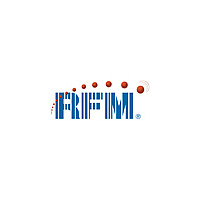DR-WLS1273L-102 RFM, DR-WLS1273L-102 Datasheet - Page 29

DR-WLS1273L-102
Manufacturer Part Number
DR-WLS1273L-102
Description
WiFi / 802.11 Modules 2.4 and 5.8GHz + BT
Manufacturer
RFM
Datasheet
1.DR-WLS1273L-102.pdf
(31 pages)
Specifications of DR-WLS1273L-102
Rohs
yes
Protocol Supported
802.11 a/b/g
Frequency Band
64 kHz to 4 GHz
Data Rate
1 Mbps, 2 Mbps, 5.5 Mbps, 11 Mbps
Interface Type
SDIO, UART
Operating Supply Voltage
3 V to 4.2 V
Supply Current Transmitting
350 mA
Supply Current Receiving
150 mA
Maximum Operating Temperature
+ 85 C
Minimum Operating Temperature
- 40 C
Modulation Technique
CCK, DSSS
Storage Conditions
This product should be stored without opening the packing in an ambient temperature range of 5 to 35 C
and humidity range from 20 to 70% RH, and be used within six months of receipt. Packing materials can
be deformed at temperatures above 40 C. If the product is not used six months or more after receipt, its
solderbility should be tested before being used. The product should be stored in non-corrosive gas. Any
excess mechanical shock such as sticking the packing materials with a sharp object or dropping the
product, etc., must be avoided in order not to damage the packing materials. This product is applicable to
MSL3, based on JEDEC Standard J-STD-020.
After the packing is opened, the product should be stored at an ambient temperature below 30 C and at
humidity level less than 60% RH. The product should be used within 168 hours. If the color of the indica-
tor in the packing has changed, the product should be baked before soldering at 125 to 130 C for 24
hours. The products should be baked on the heat-resistant tray, as the tape and reel materials are not
heat-resistant.
Handling Conditions
Use care in handling or transporting this product as excessive stress or mechanical shock can crack or
break the product. Do not touch this product with bare hands as this can result in poor solderability.
Standard PCB Design (Land Pattern and Dimensions)
All the ground terminals should be connected to the ground patterns, and unconnected terminals should
be soldered to unconnected PCB pads for mechanical strength. The best land pattern depends on the
pattern generation method, grounding method, land dimensions, land forming method of the unconnected
terminals and the PCB material and thickness. Contact RFM technical support if you have any questions
about adapting the recommend land pattern to your application specifics or before using non-standard
land dimensions, etc.
Module PCB Placement
This product can be broken by uneven forces from a worn-out chucking locating claw or a suction nozzle.
To prevent damage, be sure to follow the specifications for the maintenance of the chip placer being
used. Be aware that mechanical chucking can damage this product when used for mounting it on a PCB.
Module Soldering
Preheat so that the temperature difference T between the solder and module surface is less than
130 C. If the module is immersed in solvent after mounting, care should be taken to limit the temperature
difference to 100 C. These provisions are necessary to prevent damage due to excessive differential ex-
pansion. Contact RFM technical support if you have any questions about soldering methods or are con-
sidering other soldering conditions.
www.RFM.com
Technical support +1.972.448.3700
Page 29 of 31
© 2012 by RF Monolithics, Inc.
E-mail:
tech_sup@rfm.com
DR-WLS1273L-102 Data Sheet - 12/13/12


















